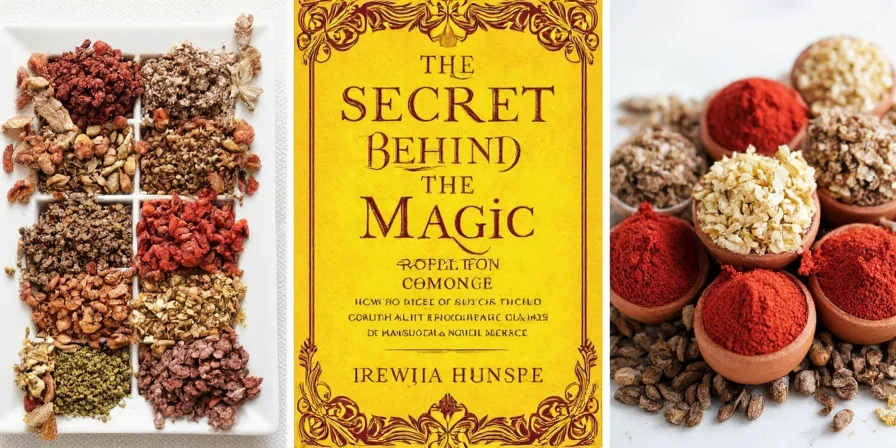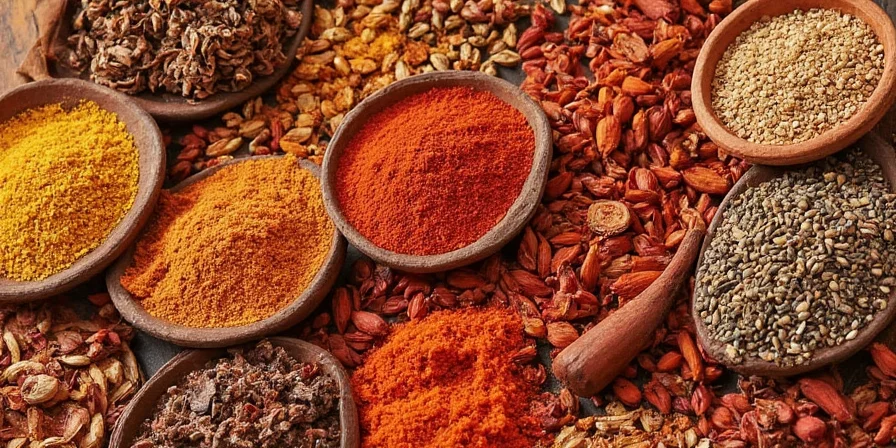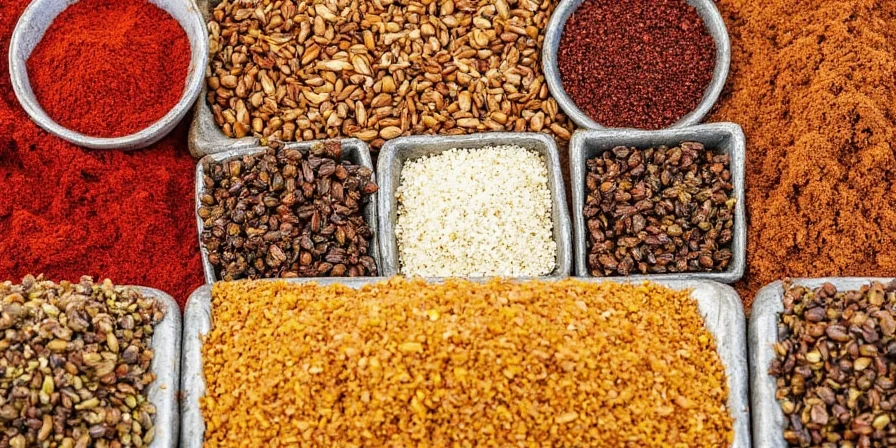The Spice That Changed the World: A Deep Dive into Curry's History and How to Handle It Like a Pro

Curry is one of those magical ingredients that can transform a simple dish into a flavor explosion. But have you ever wondered where it all started? What exactly is in that mysterious yellow powder that makes your food taste like a trip to India, Thailand, or even the Caribbean? In this blog, we’ll take a trip back in time to find out where curry originated and then dive into the nitty-gritty of how to store and use this powerful spice like a pro.
The Origins of Curry: A Tale of Spices and Trade Routes
Curry didn’t just appear out of nowhere. Its roots trace back thousands of years to the Indian subcontinent, where a complex blend of spices was used to flavor food long before the word “curry” was even coined. However, the specific spice that we now associate with curry is curry leaves—a fragrant herb native to South and Southeast Asia.
But wait, curry leaves aren’t the only ingredient in curry. In fact, the word “curry” itself comes from the Tamil word “kari,” meaning sauce or gravy. Over time, as spices like turmeric, cumin, coriander, and ginger were added, the concept of curry evolved, especially with the influence of British colonialism, which popularized the term in the West.
Curry Leaves: The Star of the Show
Curry leaves are the unsung hero of many Indian and Southeast Asian dishes. They have a distinct aroma that is both citrusy and slightly peppery, and they are often used in small quantities to add depth to a dish. Unlike other spices, curry leaves are usually used fresh, though they can also be dried or ground.
So, if you’re ever at a market and see a pile of green leaves being sold as “curry leaves,” don’t be confused. They are not the same as the curry powder you might find in a Western grocery store. They are a completely different plant, and their usage is quite specific.
Storing Curry Leaves: A Few Tips for Keeping Them Fresh
Now that we know the importance of curry leaves, let’s talk about how to store them properly. Proper storage is key to preserving their flavor and aroma, and here are a few tips that will help you keep them in top condition:
- Use them fresh if possible: Fresh curry leaves are best when used in dishes like chutneys, curries, or as a garnish. They add a vibrant, aromatic note that dried leaves can’t quite replicate.
- Dry them for long-term storage: If you have a surplus, you can dry curry leaves by spreading them on a baking sheet and placing them in a low-temperature oven (around 150°F / 65°C) for 1–2 hours. Store in an airtight container in a cool, dark place.
- Freeze for best results: Another great option is to freeze curry leaves. Simply place them in an airtight container or freezer bag and store them in the freezer for up to six months. They can be used directly from the freezer in soups or stews.
- Avoid moisture: Moisture is the enemy of dried spices. Keep your stored curry leaves in a dry, airtight container to prevent them from losing their potency or developing mold.
Here’s a quick comparison table to help you choose the best storage method based on your needs:
| Storage Method | Pros | Cons |
|---|---|---|
| Fresh | Maximum flavor and aroma | Short shelf life |
| Dried | Longer shelf life | Some flavor loss |
| Frozen | Preserves most flavor | Requires planning ahead |
Using Curry Leaves: Tips and Tricks for Maximum Flavor
Now that you’ve stored your curry leaves properly, it’s time to put them to use. Here are some tips to help you get the most out of this versatile herb:
1. Use in Dishes Where You Want a Subtle Flavor
Curry leaves are best when used in small quantities. A few leaves can go a long way in adding depth to a dish. They are commonly used in Indian curries, chutneys, and even in some Southeast Asian stir-fries.
2. Toast Them Before Adding to a Dish
Toasting curry leaves in a dry pan before adding them to your dish can enhance their aroma and flavor. Simply heat them in a pan over medium heat for 1–2 minutes until they become fragrant and slightly crisp.
3. Pair with Other Spices
Curry leaves work well with other spices like cumin, coriander, turmeric, and even a touch of cinnamon. They can be used in a variety of dishes, from savory to slightly sweet.
4. Use in Marinades
If you’re marinating meat or vegetables, adding a few curry leaves to the marinade can add a unique, aromatic note. This is especially popular in South Indian and Sri Lankan cooking.
5. Make a Curry Leaf Chutney
One of the most common uses of curry leaves is in chutneys. They are often blended with coconut, green chilies, garlic, and tamarind to make a tangy, spicy, and fragrant condiment that pairs perfectly with rice and flatbreads.
Common Mistakes to Avoid When Using Curry Leaves
Even though curry leaves are a powerful ingredient, there are a few common mistakes that can ruin their flavor or make your dish less than ideal:
- Using too many: As mentioned earlier, curry leaves are potent. Using too many can overpower a dish and make it taste bitter or too strong.
- Overcooking them: If you add curry leaves too late in the cooking process, they can become bitter. It’s best to add them early on in the cooking process so they have time to infuse the dish with their flavor.
- Using them in the wrong dishes: Curry leaves are not the best choice for every dish. They work best in dishes where you want a subtle, aromatic note, not in something like a cake or a dessert.
Curry Leaves vs. Curry Powder: What’s the Difference?
Now that we’ve covered all about curry leaves, let’s quickly clarify the difference between curry leaves and curry powder. Curry powder is a blend of ground spices, typically including turmeric, coriander, cumin, ginger, and sometimes even chili. It is used in a variety of cuisines around the world, especially in the West.
Curry leaves, on the other hand, are a completely different plant. They are a herb, not a spice, and they are used in small quantities to add flavor and aroma to dishes. They are not interchangeable with curry powder, and using one in place of the other can result in a very different taste.
Final Thoughts: Embrace the Power of Curry Leaves
Curry leaves may not be the most well-known spice in the world, but they are one of the most important when it comes to Indian and Southeast Asian cooking. Whether you’re a seasoned chef or just starting out in the kitchen, learning how to store and use curry leaves properly can take your cooking to the next level.
So next time you’re in the kitchen and you have a few curry leaves on hand, don’t be afraid to experiment. They can transform a simple dish into a flavor-packed masterpiece. And remember, the key to success is not just in what you use, but how you use it. Happy cooking!

Curry leaves are a true culinary treasure, and with the right storage and usage tips, you can enjoy their unique flavor in every dish. Whether you’re making a classic Indian curry or a modern fusion dish, these little leaves can add a world of flavor to your plate.
So go ahead, grab a few curry leaves, and let your taste buds take a journey around the world. You might just find that the best flavors come from the smallest ingredients.
Further Reading: Explore More About Spices and Their Uses
If you’re interested in learning more about other spices and their uses, there are plenty of resources available. From the history of cinnamon to the science of saffron, there’s always something new to discover in the world of spices.
Whether you’re a professional chef or just someone who loves cooking, understanding the nuances of spice storage and usage can help you elevate your dishes and impress your guests. So keep exploring, keep experimenting, and most importantly, keep enjoying the flavors of the world.

Spices are more than just ingredients—they’re a window into cultures, histories, and traditions. And with the right knowledge, you can bring the flavors of the world into your own kitchen. So don’t be afraid to try something new. After all, the best dishes are made with a little curiosity and a lot of love.
Now that you know the secrets of curry leaves, go out and make your own magic in the kitchen. Happy cooking, and may your next meal be filled with flavor and fun!










 浙公网安备
33010002000092号
浙公网安备
33010002000092号 浙B2-20120091-4
浙B2-20120091-4